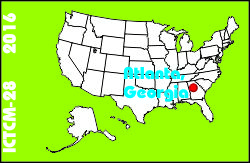
Electronic Proceedings of the Twenty-eighth Annual International Conference on Technology in Collegiate MathematicsAtlanta, Georgia, March 10-13, 2016Paper A036
Multivariable Spreadsheet Modeling and Scientific Thinking via Stacking Bricks |
Scott A. SinexPrince George's Community College ssinex@pgcc.edu list of all papers by this author |
| Click to access this paper: |
ABSTRACT
Students measure the height of a variety of stacks of bricks and construct a mathematical model via a spreadsheet using linear regression. They predict the height of a 100 bricks. Then they go outside and measure brick heights in a real brick wall. Students quickly discover that mortar in between the brick is going to modify their model. They take measurements of bricks plus mortar and produce a second or revised model. Students compare models, consider random and systematic errors using a prebuilt spreadsheet simulation, and then develop a model to count the number of bricks in a specified area of a wall (and can verify). From multiple measurements of bricks and mortar joints in a brick wall, students can get a feel for real variation. In the end, a multivariable model is developed and explored as an interactive spreadsheet simulation. A version using Lego bricks and plates (mortar) is also considered.Keyword(s): applications, modeling, spreadsheets
